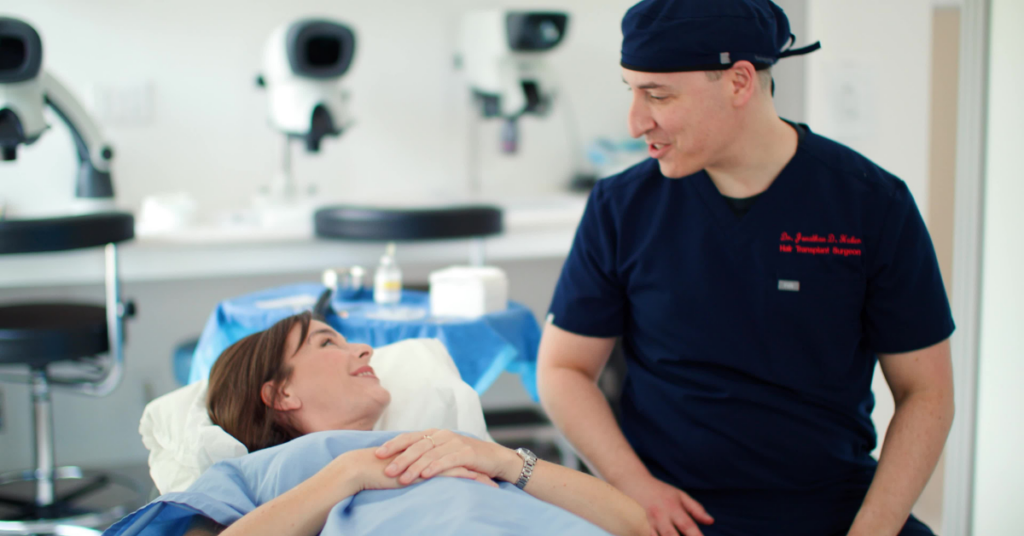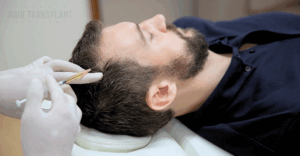We’ve all regretted purchases that didn’t live up to their promises. With hair transplants, that regret can take 12 to 18 months to fully realize, and by then, the damage is done. A poorly performed transplant can lead to expensive reconstruction and stress-inducing complications like infections. This article will guide you in comparing hair transplant costs, options, and techniques to help you make an informed decision.
Introduction to Hair Transplant
A hair transplant is a surgical procedure designed to restore hair growth by relocating healthy hair follicles from one part of the body—most commonly the back or sides of the scalp—to areas affected by hair loss. This innovative solution has gained popularity worldwide, with many clinics offering a range of hair transplant options to suit different needs and budgets. The process typically involves extracting individual hair follicles and implanting them into thinning or balding areas, resulting in natural-looking hair growth over time.
Hair transplants are sought after by individuals experiencing hair loss due to genetics, aging, or other factors. The number of grafts required for a successful outcome can vary greatly depending on the extent of hair loss and the desired density. As a result, the cost of a hair transplant can differ significantly from one patient to another, influenced by the clinic’s location, the surgeon’s expertise, and the complexity of the procedure. In this article, we’ll explore the world of hair transplants, comparing options, techniques, and costs to help you make an informed decision about restoring your hair and confidence.
What should I look for when choosing a hair transplant clinic?
When choosing a clinic, consider factors such as the surgeon’s experience, patient reviews, the clinic’s accreditation, and the availability of post-operative care. It’s important to feel confident in the clinic’s ability to deliver safe and effective results. Be sure to compare prices between clinics and countries, taking into account factors like graft count, technique, and location to make an informed decision.
When restoring hair, choosing the right location for a hair transplant is crucial. Turkey and Canada are two of the most popular destinations for this procedure, each offering distinct advantages. In this article, we’ll delve into the key differences between getting a hair transplant in Turkey vs. Canada, highlighting the pros and cons of each and covering factors like cost, quality, safety, and patient experiences.
Understanding Hair Transplants
Before diving into the specifics of hair transplants in Turkey and Canada, it’s essential to understand what the hair transplant procedure entails. A hair transplant procedure is a surgical technique that involves moving hair follicles from one part of the head or body, most typically the back or sides of the scalp, to areas with thinning or no hair. The transplanted hair grows naturally over time, helping to restore a fuller appearance.
The most common techniques are Follicular Unit Excision/Extraction (FUE) and Follicular Unit Transplantation (FUT). Follicular Unit Extraction (FUE) involves extracting individual hair follicles directly from the donor area and implanting them into the balding regions. Direct hair implantation is another advanced technique that offers precise, minimally invasive results with improved graft survival rates. The term ‘hair implants’ is also often used to refer to hair transplant procedures.
Hair Restoration and Hair Loss
Hair loss is a widespread concern that affects millions of people across the globe, impacting both men and women of all ages. Whether caused by genetics, hormonal changes, or underlying health conditions, hair loss can have a significant effect on self-esteem and quality of life. Fortunately, advances in hair restoration surgery, including hair transplants, have made it possible for many individuals to regain a fuller, more youthful head of hair.
Hair restoration encompasses a variety of techniques aimed at combating hair loss and promoting natural hair growth. Hair transplants remain one of the most effective and long-lasting solutions, offering patients the chance to restore their hairline and improve their appearance. With the help of skilled surgeons and advanced technology, hair restoration surgery can deliver impressive, natural-looking results tailored to each patient’s unique needs.
Causes of Hair Loss
Hair loss can result from a range of factors, each requiring a different approach to treatment. Some of the most common causes include:
- Genetics: Hereditary hair loss, known as androgenetic alopecia or male/female pattern baldness, is the leading cause of hair thinning and baldness.
- Hormonal Imbalances: Changes in hormone levels, such as those experienced during pregnancy, menopause, or thyroid disorders, can trigger hair loss.
- Medical Conditions: Certain illnesses, including autoimmune diseases and thyroid problems, can contribute to hair loss.
- Stress: Both physical and emotional stress can disrupt the normal hair growth cycle, leading to temporary or prolonged hair loss.
Understanding the underlying cause of hair loss is essential for selecting the most effective hair restoration strategy.
Hair Restoration Options Beyond Transplantation
While hair transplants are a highly effective solution for many, they are not the only option available for addressing hair loss. Other hair restoration treatments include:
- Medications: FDA-approved medications like minoxidil and finasteride can help slow or halt hair loss and, in some cases, stimulate new hair growth.
- Low-Level Laser Therapy: This non-invasive treatment uses targeted light energy to encourage hair follicles to grow, making it a popular choice for those seeking a non-surgical approach.
- Platelet-Rich Plasma (PRP) Therapy: By injecting concentrated platelets from your own blood into the scalp, PRP therapy aims to rejuvenate hair follicles and promote natural hair growth.
Each of these options can be used alone or in combination with hair transplants, depending on the individual’s needs and the extent of hair loss. Consulting with a hair restoration specialist can help determine the best course of action for achieving your hair goals.
How to Ensure a Safe, High-Quality Hair Transplant
Quality care might come at a higher price, but it’s an investment in lasting, natural-looking results. Successful hair transplants depend not only on advanced techniques and technology but also on the surgeon’s expertise and comprehensive care throughout the process.
Ethical considerations are becoming increasingly important in the medical tourism industry. While it is common for cost to be the most significant driving factor in today’s global environment, more than just cost needs to be considered. Costs may seem less prohibitive overseas, but the quality of the care and surgery must be paramount. In the same way that you would question the ‘deal of the century’ if you were buying a car, a cheaper hair transplant cost may also be hiding something behind the great price.
You don’t want to risk a procedure with long-term consequences at any cost. So, understanding what’s marketing and what’s critical to your hair transplant’s success is significant.
To protect yourself, you should be asking critical questions: How long has the clinic been in operation? Who will assess your hair loss? What’s the surgeon’s qualification? What follow-up care is offered?
Choosing a reputable clinic ensures you receive personalized, expert care, avoiding the pitfalls of overharvesting and poorly performed procedures. Quality care might come at a higher price, but it’s an investment in lasting, natural-looking results.
Cost Comparison: Turkey vs. Canada
When considering a hair transplant, a thorough hair transplant cost comparison is essential, as several factors influence pricing in different countries. These factors include the number of grafts required, the technique used, the surgeon’s experience, and the clinic’s reputation. In Canada, the cost of a hair transplant can range from $6,000 to $20,000.
Hair transplant prices in Turkey are known for their affordability. The average price for a hair transplant in Turkey typically ranges from $1,500 to $4,000, depending on the number of grafts and the clinic’s reputation. In Turkey, the cost of hair transplants can range from $1,400 for 2000 grafts to $9,000 for 8000 grafts including all associated services. The market average for hair transplant cost Turkey is much lower than in many Western countries. The cost in Turkey is especially attractive for international patients, as Turkey typically ranges between these amounts, making it a leading destination for medical tourism. In comparison, the average price for the same procedure in Canada can range from $6,000 to $20,000, highlighting a significant cost difference between the two countries.
The cost difference is largely due to local economic conditions, currency exchange rates, and operational expenses. While the upfront cost in Canada may seem higher, it’s important to consider the long-term value and quality of the procedure. For example, if you require more grafts to cover a larger area of hair loss, the total price will increase in both countries, but the overall hair transplant cost Turkey remains more competitive.
If you buy the cheapest used car on the lot, based solely on the lowest price, are you surprised when it breaks down just after you drive it off the lot?
That’s exactly the scenario you have to consider with your hair transplant. Are there reputable clinics in Turkey? Yes. Are there junky hair transplant clinics in Canada? Yes. If you do choose to shop exclusively by price, you might face additional expenses for corrective procedures, because more affordable pricing doesn’t guarantee everything you need for a successful outcome.
Let’s get into it.
Hair Transplant in Turkey: Overview
Turkey has gained a global reputation as a top destination for hair transplants, attracting thousands of patients annually from around the world. Hair transplantation in Turkey is especially popular due to its combination of affordable prices and high-quality procedures, making it a leading choice for international patients. The country is particularly known for the affordability of various cosmetic procedures. Cities like Istanbul are home to numerous clinics that specialize exclusively in hair restoration procedures.
Why Turkey is a Popular Destination for Hair Transplants
Turkey has become a leading destination for hair transplants, attracting thousands of patients annually. The allure? Low prices and all-inclusive packages. However, these tempting offers often have hidden risks that could end up costing you more in the long run.
For many patients, the choice between Turkey and Canada also involves travel considerations. Turkey, particularly Istanbul, is a major hub for medical tourism, attracting patients from Europe, the Middle East, and beyond. Many patients appreciate the all-inclusive packages offered by Turkish clinics that cover surgeries, accommodations, and travel expenses. Travel also means you must be prepared for additional costs for things like accommodations, visas, food and out-of-clinic medications.
Hair Transplant in Turkey: What Do Fast and Cheap Hair Transplant Clinics in Turkey Really Offer?
When researching hair transplant options, Turkey often ranks as a top destination due to its low-cost offerings. However, the appeal of cheap hair surgery can be misleading. While Turkey has reputable clinics, the surge in discounted procedures has led to concerning practices, where unqualified technicians and misleading marketing tactics put patients at risk.
Though attractive, these low-cost deals often hide hidden dangers. What seems like an economical solution can lead to poor results, costly repairs, and irreversible damage. Not all hair transplant treatments in Turkey are equal—quality, outcomes, and safety can vary significantly between clinics and providers.
Consider what these “all-inclusive” packages often promise:
- Round-trip airport transfers
- Brief consultation, sometimes just before surgery
- Hotel accommodation for one night
- Limited post-op care
- Unlimited grafts
While these packages may sound convenient, they should raise red flags. The drastically reduced prices often mean corners are being cut, whether in staffing, equipment quality, or personalized care. Hair transplantation is a complex procedure requiring precision and expertise—rushed, assembly-line approaches can lead to unsatisfactory results or, worse, a transplant disaster.
Cultural and Language Barriers
Language and cultural barriers can play a significant role in the patient experience. In Turkey, while many clinics cater to international patients and have English-speaking staff, language barriers can still exist, particularly in non-tourist areas. Cultural differences may also impact the overall experience, especially in terms of patient expectations and communication styles.
Quality of Care and Expertise
While Turkey is known for its affordability, it also boasts a high level of expertise, with many surgeons having years of experience in the field. However, the sheer volume of clinics in Turkey means that quality can vary. It’s essential to thoroughly research and choose a reputable clinic.
Technology and Techniques
Both Turkey and Canada utilize the latest technology and techniques in hair transplantation. However, Turkey is sometimes quicker to adopt new and innovative methods, partly due to the high demand for these procedures. Many clinics in Turkey offer cutting-edge technology as a marketing tactic without disclosing the safety record or efficacy of those techniques.
Comparing Clinic Facilities and Amenities
The facilities and amenities of hair transplant clinics can vary significantly between Turkey and Canada. In Turkey, many clinics are located in large, modern facilities that cater specifically to medical tourists. These clinics often offer luxurious amenities, such as private recovery suites and on-site spas, to enhance the patient experience.
Post-Operative Care and Follow-Up
Post-operative care is crucial for the success of a hair transplant. In Turkey, many clinics offer comprehensive post-op care, including medications, shampoos, and follow-up consultations. However, the distance for international patients can make follow-up visits challenging, often requiring remote only consultations.
The Hidden Dangers of Cheap Hair Transplants in Turkey
While Turkey boasts many reputable clinics, the sheer volume of patients has led to the rise of lower-tier facilities that cut corners. Common issues include:
- Unqualified Technicians: Some clinics employ unlicensed technicians instead of experienced surgeons, leading to poor results and complications.
- Overharvesting: The promise of “unlimited grafts” can lead to overharvesting, which damages your donor area and limits future options.
- Inadequate Post-Operative Care: Many clinics lack the resources for proper follow-up, leaving you vulnerable to infections and poor healing.
The main risks include choosing a low-quality clinic that may not adhere to proper safety and hygiene standards, leading to complications. It’s crucial to select an accredited and reputable clinic.
Patient Testimonials and Reviews
Patient testimonials and reviews can provide valuable insights into the quality of care and outcomes in both Turkey and Canada. In Turkey, many clinics have a large number of international patients, resulting in a wealth of reviews and testimonials. However, the sheer volume of reviews can make it challenging to discern genuine feedback from marketing.
Safety and Regulation
Turkey has regulations in place, but the rapid growth of the hair transplant industry has led to a wide range of standards. While many clinics in Turkey are highly reputable and offer excellent care, there are also less scrupulous operations. It’s crucial to research and choose a clinic that is accredited and has a proven track record of safety.
Success Rates and Outcomes
Success rates for hair transplants in both Turkey and Canada are generally high, but there are some nuances. Turkish clinics often perform a higher volume of procedures, which can lead to a wide range of outcomes depending on the clinic’s quality. However, top-tier clinics in Turkey are known for their excellent results.
Legal and Insurance Considerations
Legal and insurance considerations are another important factor. In Turkey, medical malpractice laws can be complex, and while some clinics offer guarantees or warranties for their procedures, it’s crucial to understand the legal recourse available in case of complications.

Hair Transplant in Canada: Overview
Canada offers exceptional hair transplant services, with a strong emphasis on quality, safety, and personalized care. When considering a hair transplant Canada is often compared to other destinations for its high standards and reliable procedures. The country’s hair transplant clinics are highly regulated, adhering to stringent health and safety standards, ensuring peace of mind for patients. In Canadian clinics, the focus is on achieving natural hair transplant results through advanced techniques and careful attention to detail, which is complemented by patient-centered care.
Travel Considerations
While Canada may not be a global hub for medical tourism like Turkey, it offers distinct advantages for individuals from the United States and other English-speaking countries. With no language barrier and cultural similarities, Canadian clinics provide a more seamless experience for North American patients. Additionally, for those in the U.S., Canada’s proximity makes it a convenient choice for hair restoration, eliminating the need for long-haul travel and overseas procedures.
Cultural and Language Comfort
The absence of language barriers (for English-speaking patients) and cultural familiarity make hair transplant procedures in Canada particularly appealing. Patients can expect clear, transparent communication and a healthcare experience that aligns with their expectations, reducing stress and uncertainty.
Why Choose a Hair Transplant in Canada?
Opting for a hair transplant in Canada offers several advantages, such as:
- Experienced Surgeons: Many Canadian clinics are staffed by board-certified hair transplant surgeons who specialize in hair restoration procedures. Their expertise ensures personalized care and meticulous attention to detail, which is key to achieving optimal results.
- Technology: Canada’s hair restoration clinics utilize proven technologies as well as complementary treatments such as PRP therapy and laser treatments. Utilizing a combination of technology with proven and tested success rates helps to improve the overall success and satisfaction rates for patients.
- Comprehensive Care: From the initial consultation through post-operative follow-ups, Canadian clinics prioritize a seamless, supportive experience. This patient-centred approach focuses on long-term success and natural-looking results, which makes hair transplants in Canada highly appealing.
Quality of Care and Expertise
In Canada, the higher cost of hair transplants often reflects the level of care and expertise. Canadian hair transplant surgeons typically undergo extensive training, and clinics adhere to strict medical regulations set by health authorities. This ensures that patients receive high-quality care with a strong emphasis on safety, precision, and patient satisfaction.

Technology and Techniques
While Canada may be more conservative in adopting emerging technologies, it offers tried-and-tested methods for hair restoration. The focus remains on proven techniques such as FUE (Follicular Unit Extraction), which is known for its reliability and safety. This patient-first approach ensures that innovations are adopted only when they meet safety standards and demonstrate consistent success.
Comparing Clinic Facilities and Amenities
Canadian hair transplant clinics are known for their state-of-the-art facilities, emphasizing cleanliness, safety, and patient comfort. Although these clinics may be smaller than their counterparts in countries like Turkey, they are highly focused on delivering personalized care in a professional and comfortable environment. Amenities may not be as luxurious as in larger medical tourism hubs, but the emphasis is on creating a supportive atmosphere for patients.
Safety and Regulation
Safety is a top priority when undergoing any surgical procedure, and Canada’s healthcare system is among the most highly regulated in the world. Patients can expect rigorous safety standards for hair transplants, as Canadian clinics must adhere to strict guidelines set by medical boards and health authorities. This ensures that your procedure is performed in a safe and controlled environment, with experienced medical professionals.
Patient Experience and Satisfaction
In Canada, the patient experience is typically more personalized, with clinics offering in-depth consultations and tailored follow-up care. While Canadian clinics may not always provide all-inclusive packages like those in Turkey, they excel in offering thorough post-operative care and support, ensuring a smooth recovery process and the best possible outcome.
Patient Testimonials and Reviews
Due to the lower volume of procedures in Canada compared to Turkey, patient reviews may be fewer, but they tend to be highly detailed. Canadian hair transplant clinics often receive high praise for their professionalism, clear communication, and quality aftercare. The focus on personalized service results in positive patient reviews that highlight the high success rates and natural results.
Post-operative Care and Follow-Up
One of the key advantages of choosing a hair transplant in Canada is the accessibility of post-operative care. With Canadian clinics being closer to North American patients, follow-up appointments are easier to schedule and attend. These clinics provide comprehensive aftercare, with detailed instructions and readily available support for in-person follow-ups.
Success Rates and Outcomes
With a focus on quality over quantity, Canadian hair transplant clinics tend to deliver consistent and highly satisfactory results. The personalized approach, combined with the use of proven techniques, often leads to natural hair growth and minimal scarring, with many patients reporting excellent results in terms of hair density and appearance.
Legal and Insurance Considerations
Canada offers robust legal protections for patients undergoing hair transplants, with strict oversight from medical regulatory bodies. While some aspects of the procedure may be partially covered by provincial health insurance, private insurance plans may also cover a portion of the cost, depending on the specifics of your policy.
Clinic Reputation and Experience
Selecting the right hair transplant clinic is a critical step in ensuring a successful hair restoration journey. The reputation and experience of a clinic can have a profound impact on the quality of your results and your overall satisfaction with the procedure. Here’s what to look for when evaluating a hair transplant clinic:
- Surgeon’s Expertise: Choose a clinic with experienced surgeons who specialize in hair transplantation. A skilled surgeon with a proven track record in hair restoration surgery can make all the difference in achieving natural, lasting results.
- Clinic’s Reputation: Take the time to research the clinic’s reputation online. Reading reviews and testimonials from previous patients can provide valuable insights into the quality of care, patient satisfaction, and overall experience.
- Accreditation: Look for clinics that are accredited by respected organizations, such as the International Society of Hair Restoration Surgery (ISHRS). Accreditation ensures that the clinic adheres to high standards of safety, ethics, and professionalism.
- Follow–Up Care: Comprehensive follow-up care is essential for optimal healing and long-term success. A reputable clinic will offer ongoing support and guidance throughout your recovery, helping you achieve the best possible outcome.
Whether you’re considering a hair transplant in Turkey, Canada, or elsewhere, prioritizing the clinic’s reputation and the expertise of its surgeons is key. By doing your homework and choosing a clinic that values patient safety, quality care, and proven results, you can embark on your hair restoration journey with confidence and peace of mind.
Conclusion: Which is the Better Option?
Deciding between a hair transplant in Turkey vs. Canada ultimately depends on your priorities. If cost is the primary concern, and you’re comfortable traveling abroad, Turkey does offer some value for money depending on the clinic you choose. However, if safety, regulation, and personalized care are more important to you, and you prefer to stay closer to home, Canada is the better option.
Both countries offer high-quality hair transplants, but the experience and outcomes can vary widely depending on the country and clinic you choose. It’s essential to do thorough research, read patient reviews, and consult with potential clinics to find the best fit for your needs.
Additionally, we would be remiss not to mention that in Turkey, the rapid growth of the hair transplant industry and the medical tourism industry in general, has raised still unaddressed concerns about the exploitation of both patients and medical staff. A hair transplant is a medical procedure. You should not be shopping for one the same way you do for consumable products. Quality and safety matters. Slick advertising, not so much. Unfortunately, many Canadian clinics are left to fix the mistakes made by dubious operators abroad.
Opting for a well-established clinic in Canada ensures you receive care from certified professionals, minimizing risks and maximizing results.
Investing in your appearance should be a careful decision. Don’t be swayed by cut-rate offers that compromise your health and happiness. Choose a clinic that prioritizes your long-term well-being over short-term savings.






